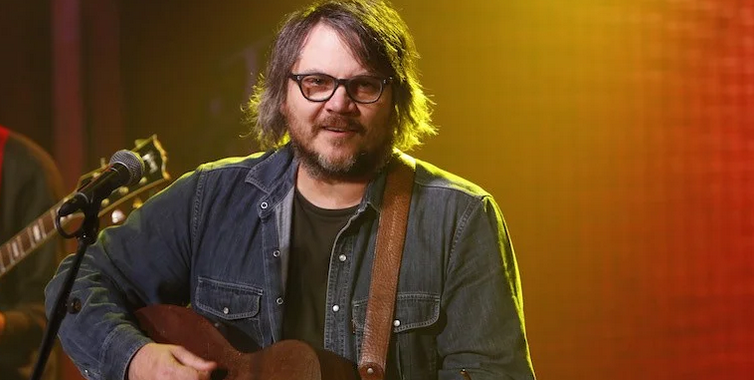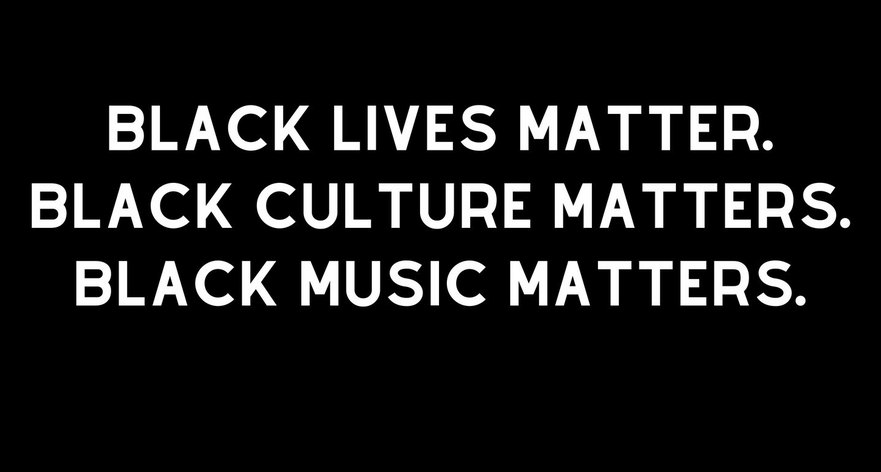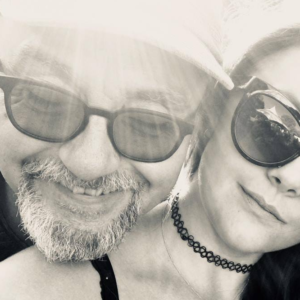Black History Month
TERENCE BLANCHARD / MARVIN GAYE
“Black Music Is Protest. Learning The Melody Isn’t Enough” CONTENTS
- INTRODUCTION
- OPINION: In a concise and smart essay, composer and musician Terence Blanchard argues that it’s important for allies of Black people to truly feel and appreciate the meaning of Black protest music
- ALBUM: Marvin Gaye‘s What’s Going On. On Spotify and YouTube.
Black History Month
The past year has been momentous in the struggle for Black rights. February is Black History Month and, once again, Kurated is focusing on Black issues and artists.
Stay tuned and enjoy,

13 February 2021

INTRODUCTION
- Terence Blanchard asks Black allies to really listen to what Black music is saying
- Reviewers look at Marvin Gaye‘s seminal album, What’s Going On
by Kris Klaasen
Last year’s Black Lives Matter protests in the U.S. and elsewhere sparked by the May murder of George Floyd were a milestone in the ongoing struggle for civil rights. White privilege and systemic racism were examined and talked about like never before. Many non-Black people – including those in my extended circle – started seriously examining our own inherent racism and unearned rights.
For many of us, Black music – from jazz and blues, rock to hip hop and rap – is a big part of our musical soundtrack and one of the only ways we know anything at all about Black culture and oppression.
In the to-the-point opinion piece below, jazz musician and composer Terence Blanchard asks us to go further. In discussing Marvin Gaye’s breakthrough protest What’s Going On, he writes:
“It hit me then just how many people listen to the groove and the melody of this song, without really hearing the words. And that made me realize that many well-meaning people have heard only the melody of our plight, without knowing what the song means for us.”
OPINION
Black Protest Is Music.
Learning The Melody Isn’t Enough
by Terence Blanchard
This piece first appeared on npr.org on June 18, 2020. Terence Blanchard’s most recent work is the score for the 2020 film Da 5 Bloods, his latest of many collaborations with director Spike Lee.
I really don’t know where to start. This past month, this past year, has been such an onslaught of terrible images and deeds and utter sorrow, and so many thoughts have been going through my mind at once that it’s hard to organize them. So please give me a moment, and I will try to put them in some kind of order.
When I saw the video of George Floyd under a police officer’s knee, being murdered for eight minutes and 46 seconds, I heard myself saying, “Here we go again.” I prepared for the usual course of events: outrage, condemnation, tears, a call for justice, the usual refrain of “thoughts and prayers for the family,” with no expectation of any subsequent action. But this time, my fellow Americans did not disappoint. I have been overjoyed to see the large protests reaching across this nation, all the way into the small towns and suburbs, to see the pain and outrage on faces of all colors, ages and genders, people from all walks of life. Maybe this time, those who have the ability to make the change — those not on the streets, those who stubbornly build walls between themselves and the people they serve — will have their hearts and minds opened to what has been happening for generations. Maybe this time can be different.
Recently, I was doing an interview about Spike Lee’s film Da 5 Bloods, where my music sits in the soundtrack alongside the music of Marvin Gaye. We started talking about his song “What’s Going On” and how so many people love it. But does everyone really hear the words?
Mother, mother
There’s far too many of you crying
Brother, brother, brother
There’s far too many of you dying …
Picket lines and picket signs
Talk to me, so you can see
Oh, what’s going on
It hit me then just how many people listen to the groove and the melody of this song, without really hearing the words. And that made me realize that many well-meaning people have heard only the melody of our plight, without knowing what the song means for us.
Sure, they can hum it back with the same phrasing, can mimic all the inflections in Marvin’s voice, enough to make themselves and us think they know the song as well as we do. They can groove to the beat the same way we would, can know the exact timing of each phrase, to the point where it seems they must get it. But when it comes to the words, it’s like we’re singing in two different languages. The pain we sing of is a lingering, never-going-away pain. For the well-intentioned co-conspirator, it’s a temporary pinprick — just enough discomfort to provide a false sense of assimilation and understanding. When they sing along, they never fully realize the luxury of pain that only lasts for a moment.
The article continues below after the Reviews and Playlist. You can also read the full article on npr.org.
REVIEWS

Marvin Gaye’s What’s Going On album
- The three must-listen songs:
- What’s Going On
- Inner City Blues and
- Mercy, Mercy Me (the Ecology)
As a socially conscious R & B statement, Gaye’s 1971 album What’s Going On broke the Motown mold. Up until that point the hugely successful Black-powered record label made its money from well-composed and played Top 40 hits featuring groups like The Supremes, The Temptations, The Four Tops, The Jackson 5 and many more. But artists like Gaye and Stevie Wonder both started charting personal and political themes on their musical paths that year.
Many critics site What’s Going On as Gaye’s best. Here’s a sampling of comments written in 2011 when the album’s 40th anniversary edition was released with outtakes and additional material:
Rolling Stone graded the recording 100 points saying, “Greatest protest album ever made? Most stirring soul-music symphony? Yes and yes. And then some”. Read full review
Online publication AllMusic also awarded a perfect score because “What’s Going On was Marvin Gaye’s masterwork, the most perfect expression of an artist’s hope, anger, and concern ever recorded.”
AllMusic reviewer John Bush writes: “What’s Going On is not only Marvin Gaye’s masterpiece, it’s the most important and passionate record to come out of soul music, delivered by one of its finest voices, a man finally free to speak his mind and so move from R&B sex symbol to true recording artist. With What’s Going On, Gaye meditated on what had happened to the American dream of the past – as it related to urban decay, environmental woes, military turbulence, police brutality, unemployment, and poverty. These feelings had been bubbling up between 1967 and 1970, during which he felt increasingly caged by Motown’s behind-the-times hit machine and restrained from expressing himself seriously through his music. Finally, late in 1970, Gaye decided to record a song that the Four Tops’ Obie Benson had brought him, “What’s Going On.” When Berry Gordy decided not to issue the single, deeming it uncommercial, Gaye refused to record any more material until he relented. Confirmed by its tremendous commercial success in January 1971, he recorded the rest of the album over ten days in March, and Motown released it in late May. Besides cementing Marvin Gaye as one of the most important artists in pop music, What’s Going On was far and away the best full-length to issue from the singles-dominated Motown factory, and arguably the best soul album of all time.” Read the full review here
Robert Christgau, the self-dubbed 78-year-old dean of American music critics, had a different take in his 1971 review giving the collection a B+:
“This may be a groundbreaking personal statement, but like any Berry Gordy quickie it’s baited skimpily: only three great tunes. “What’s Going On,” “Inner City Blues,” and “Mercy, Mercy Me (the Ecology)” are so original they reveal ordinary Motown-political as the benign market manipulation it is. And Gaye keeps getting more subtle vocally and rhythmically. But the rest is pretty murky even when the lyrical ideas are good –I like the words on “What’s Happenin’ Brother” and “Flyin’ High (in the Friendly Sky)” quite a bit – and the religious songs that bear Gaye’s real message are suitably shapeless. Worst of all, because they’re used a lot, are David Van De Pitte’s strings, the lowest kind of movie-background dreck. B+
Listen for yourself. / KK
PLAYLIST: WHAT’S GOING ON
Spotify
YouTube
Continued from the top of this post
. . . Learning the melody isn’t enough
Sure, they can hum it back with the same phrasing, can mimic all the inflections in Marvin’s voice, enough to make themselves and us think they know the song as well as we do. They can groove to the beat the same way we would, can know the exact timing of each phrase, to the point where it seems they must get it. But when it comes to the words, it’s like we’re singing in two different languages. The pain we sing of is a lingering, never-going-away pain. For the well-intentioned co-conspirator, it’s a temporary pinprick — just enough discomfort to provide a false sense of assimilation and understanding. When they sing along, they never fully realize the luxury of pain that only lasts for a moment.
It takes tremendously concentrated power to uproot harmful belief systems — by one estimate, 3.5% of the U.S. population. A study by Erica Chenoweth of Harvard University’s John F. Kennedy School of Government and Maria Stephan of the U.S. Institute of Peace derived that number from reviewing 323 mass mobilizations from 1900 to 2006. Movements need to be big so they cannot be ignored, and inclusive so that in repressive regimes, the army will have to face their neighbors, their friends and their children among the crowds of protesters. In America, that means 11.5 million of us getting involved.
At this moment, we have “Black Lives Matter” painted on 16th Street, leading into Lafayette Square, as a response to protests in Washington, D.C. CNN has reported on demonstrations stretching way into the heartland — in Paducah, Ky., Farmington, Mo., and State College, Pa. Politico has reported on protests in Boise, Ida., Medford and Grants Pass in Oregon, Eureka and Visalia in California. The New York Times wrote about rallies in Vidor, Texas, a town in which the hate of the KKK has written a dark history, as well as in Marion, Ohio, and Harvard, Neb. Hundreds of thousands have gathered in the streets nationwide. Still, it will take more time and effort to reach the level of action that can bring about lasting change.
To be clear, I do love how many have heard the words lately. I love how it is not just people of color and not just radicals making their voices heard and their numbers count. I love the inclusiveness of the crowds and the array of slogans. It has made me especially proud to watch the people out there protecting the demonstrations from those with other agendas — lines of protesters pushing back against looters, lines of reinforcements with eyewashes, water and paper towels to fight off the tear gas and pepper bombs. The dogma of those who have no intention to hear our cry for justice is to wrap themselves in patriotism and to cast those off who don’t see things their way as un-American. But a protest is patriotic. It means you give a damn. Otherwise, why take the heat — which will most surely come, either through word or ostracism or the batons of the police. It takes guts to put your life on the line by protesting.
Still, Martin Luther King Jr. cautioned us to be wary of those with good intentions. “The white moderate, who is more devoted to order than to justice,” is more of an impediment than “the White Citizen’s Council-er or the Ku Klux Klanner,” he wrote in his “Letter from Birmingham Jail.” He knew the intentions of the hooded ones, whose hatred was so palpable; the others, not so much. Today, I’m often amazed at how people who do plenty of good work for others still manage to be tone-deaf at the end of the day. The racists I can see, because they make themselves seen. It’s the well-meaning folk who have baffled me for years.
Look at how the conversation has played out in football. As a native son of New Orleans, I’ve been a big Drew Brees fan for a number of years. He’s done a lot of great work in the community; I thought he would get it. So to see the quarterback of the Saints look at player protests of police brutality and say, “I will never agree with anybody disrespecting the flag,” cut real deep, even if he later apologized. Dabo Swinney, the coach at Clemson University who has been criticized for racial insensitivity in the past, was seen in a photo wearing a T-shirt that said “Football Matters,” at a time when everybody is in an uproar about what’s been going on. Now, when he spoke at a campus Black Lives Matter rally this week, he was supportive of the cause, and he actually said one thing that was really beautiful: “I believe with all my heart that God stopped the world in 2020 so we would have perfect vision, and clearly see the social and racial injustices and the changes that need to occur in our society.” But he added, “Black lives more than matter. Black lives significantly matter and equally matter,” qualifying the slogan in a way that pushes its meaning a little more toward “All lives matter.” I don’t think Brees and Swinney are bad people. I think they’re well-meaning people. They know enough to mimic our melody, but they don’t really hear what the song is about.
So know that what you say and do right now will have consequences. While my words may fall on deaf ears, yours can be taken as a rallying cry or a dog whistle, can save a life or end it. Silence is violence, but even well-intentioned words can accidentally inspire hate. So you, the well-meaning supporter, must be very careful with your words.
And to those with agency, those with an audience, those looked up to as heroes and superstars and the metaphorical foundation of America: Now is the time for you, too, to hear the words and not just hum the melody. To see the pain that doesn’t go away. To understand the smile that hides the immense hurt. To know that no matter what we do, no matter how famous we are or how much money we make, some still view us as undeserving of the right to breathe freely. To understand how the color of your skin colors your life, and ours. The most important point I am trying to make is that the same person who knows the weight of both the melody and the words may be one of your biggest fans.
It did warm my heart to see Drew Brees take on President Trump in a tweet and firmly state that protests in the NFL were never about the American flag. I would love to see other white QBs take a stand, maybe even a knee. And it does mean something to see Nike, Twitter and Citigroup align themselves with Black Lives Matter, to see Roger Goodell finally mention Colin Kaepernick by name. Clearly, they can hear the song playing. But sadly, I’m still cautious about what happens next. Is this going to be the same old cycle, where we are battered and beaten and finally give up, settling into a low-grade rage until the next injustice comes around?
Please, let’s not make this an extended version of that old song. Rather, let’s write a new one that pushes us to change. We need a song with a melody that allows us all to say our piece, and lyrics that urge us to be our best selves. We need a future where we can rely on our own beliefs and not depend on those who have none. It’s a precious moment in time when many hearts, ears, and minds are now open to listening, so let’s take advantage of it and make our mark on the world. Let’s all listen to each other, and write a song to sing together that will give us some peace. We are well overdue.





